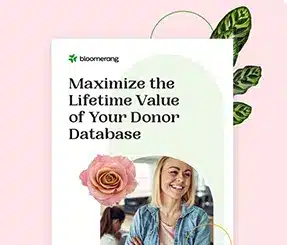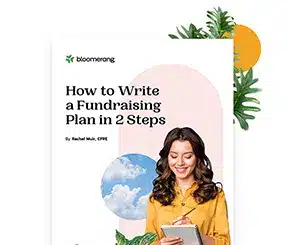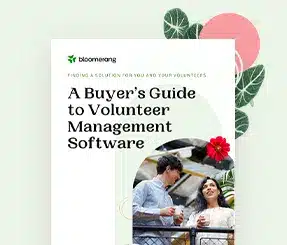“No" Can Be the Beginning, Not the End Of The Philanthropic Conversation


Full Platform Overview Chat With Us



Full Platform Overview Chat With Us




When you fear rejection, you avoid asking.
And that’s death for any fundraising program. This is particularly true for major gift fundraising, because when you secure a personal visit you’re 85% of the way towards getting a gift. Yet, somehow, getting a “no” to your face feels really bad. So, you find things to do behind your desk rather than getting out of the office.
The way around this is to understand that “no” is seldom personal.
Sure, occasionally it means you’re not the right person to make the ask. But, even then, it’s usually not personal to you. Generally, it means the donor wanted to be approached by someone they considered of VIP status. Or, perhaps, just someone they knew and liked (e.g., a fellow donor or board member). Nothing you can control, so don’t sweat it.
So, what do you do when the donor says “no?”
Persistence is next to passion in terms of what makes a successful fundraiser.
What you don’t want to do is simply keep churning through “no’s” as if you’re a high-volume “Always Be Closing” insurance salesperson making cold calls. That’s defeatist, and leaves a lot of would-be donors feeling defeated as well. Don’t shut the door!
I’m not suggesting a “no” never means no, but it can turn into a yes when you keep the door open.
Remember: Your job is to be a philanthropy facilitator. People feel good when they give! They may think a “no” is a win (they didn’t have to part with any money). But, it’s really a lose because they gain nothing. No shot of dopamine giving them a warm glow, no purpose, no meaning, and no sense of being connected and embraced by a loving community. Most people really do want to make a positive difference. They often just need a little guidance to find the path that feels the best for them.
Your role is to guide would-be donors on a journey to empower the change they’d like to see in the world (or their small corner of it).
Remember, they were willing to meet with you in the first place. So, their hesitation to give right now, or for the purpose you suggested, or at the amount you were considering, may not mean “no, never,” but “no, not today.”
If you get a hesitation, simply ask more open-ended questions to overcome the donor’s resistance. Begin by getting permission. “Can I ask you a question?” puts the donor in charge.
I like to use the following four questions:
Sometimes you’ll uncover the fact they (1) love your organization; (2) even like the project; (3) are even okay with the amount, but (4) are overcommitted to other organizations this year. Or maybe they’d rather talk about another project. Or a different amount. You can work with all these answers.
You can also follow up with what I think of as quintessential open-ended therapist questions:
The more you learn about the reasons for the donor’s reluctance, the more you can lay out the plan of action for next steps.
At this point, again ask for permission to share some options. Maybe a different project or amount? Maybe a pledge for a future gift, or a payment plan? Maybe you’ll have someone else contact them?
The true A, B, C for philanthropy facilitators is something I’ve borrowed from Daniel Pink and his book To Sell is Human.
“Attunement is the capacity to take another’s perspective, to understand their interests, and to see the world from their point of view. Buoyancy is the capacity to stay afloat on what one salesman calls an ‘ocean of rejection.’ Clarity is the capacity to make sense of murky situations, to curate information rather than merely access it, and to move from solving existing problems to finding hidden ones.”
Fundraising (nonprofit) and sales (for profit) truly are similar processes.
If done right, neither is about the business of pushing useless, unwanted stuff on others. Those who will be most successful will understand their real business is serving their customers’ needs. Effective selling — fundamentally human selling — understands the need to provide something of authentic value. All of philanthropy is a value-for-value exchange. If you’re not providing something of value, you’re going to go out of business. Which is why becoming attuned to your donor’s desires and values is essential.
Consider a “no” as your call to advance the customer/donor’s journey.
Don’t immediately bail on them! “No” is about what happens next.
How might you flip the script in a philanthropic conversation so your potential donor can experience great joy, and even a bit of heroism, when they make a gift? A gift that matches their values and makes them feel good about themselves when they look in the mirror?
The business of encouraging people to part with their money to solve some of the world’s most pressing problems takes some finesse.
In my next article, I’ll share specific tactical tips to help you identify and solve the problem standing in the way of the gift. For now, simply (1) learn to keep the door open, (2) ask “the four questions,” and (3) adopt a curious stance that helps you gently probe for the real reason underlying the donor’s initial “no” response.
How do you guide a potential donor during a philanthropic conversation? Let us know in the comments.
Comments